We have been expanding our Project TinyMiniMicro series with a few of the slightly larger systems. That includes the Dell Precision Compact series. Now we are looking at the Dell Precision 3280 Compact which sports up to a 24 core CPU, ECC memory, 8 display outputs, RAID 0/1 SSDs, and even a 20GB NVIDIA GPU. What is more, we found features that Dell did not even include on its spec sheet.
For this one, we have a video that you can find here:
As always, we suggest watching this in its own tab, window, or app for the best viewing experience. Also, we need to note that Dell sent us this unit so we could do this review.
Dell Precision 3280 Compact External Hardware Overview
The first thing that we noticed with the system is the physical size. At 8.11 x 3.12 x 7.00 inches or 206 x 79.3 x 178mm it is a bit larger than the previous generation Precision 3240 Compact and 3260 Compact.
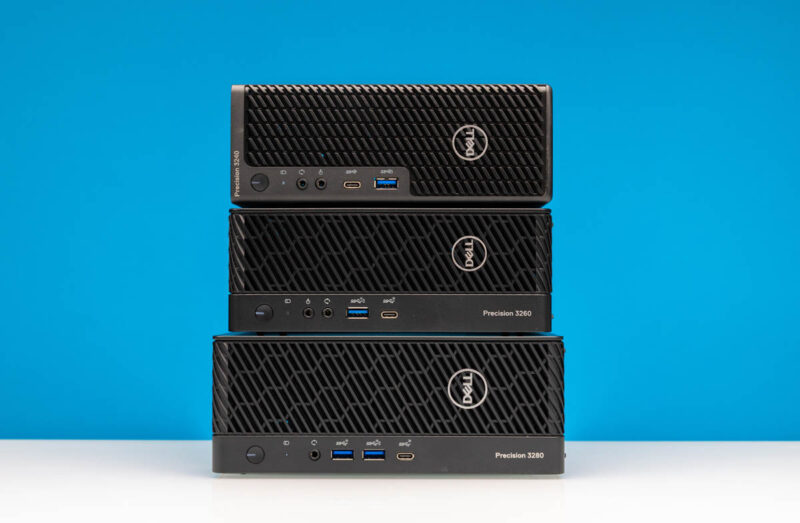
At the same time, it is still decently small to pack so much in.
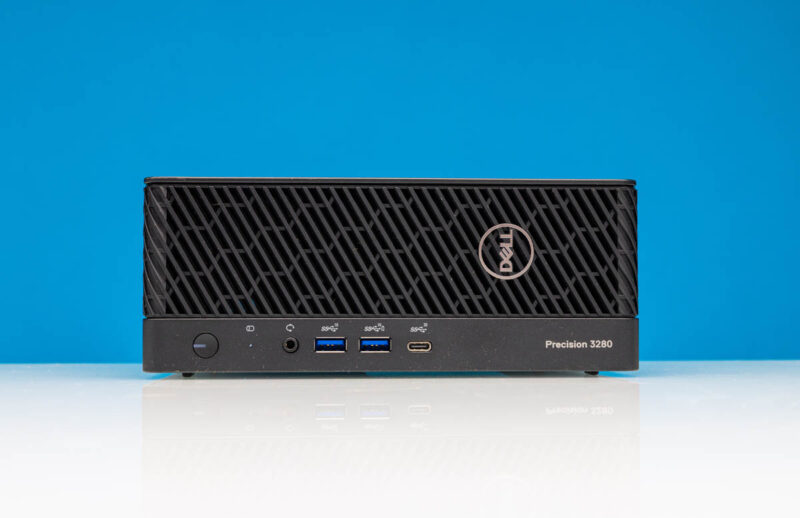
On the front we get a power button with a status LED that doubles as a diagnostic LED. There is also a combo audio jack, two USB 3.2 Gen2 Type-A ports, and a USB 2×2 Type-C port. Dell does a good job labeling these.
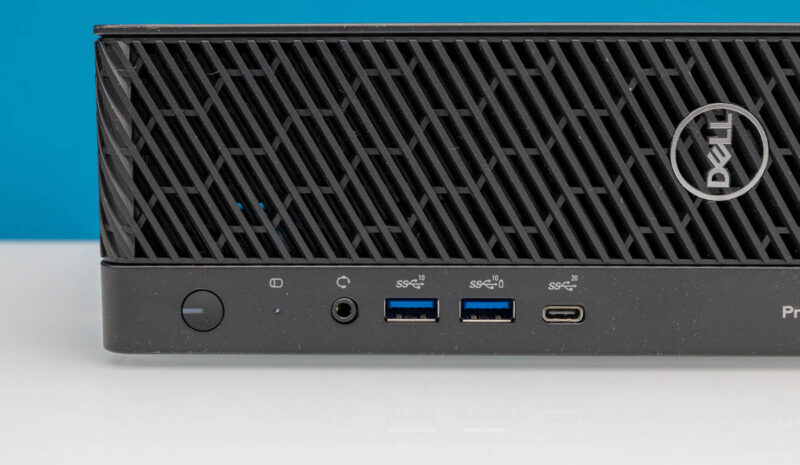
Some of our readers will have already noticed this, but the Dell logo is meant for vertical orientation while the Precision 3280 along with the port labels are meant for horizontal.
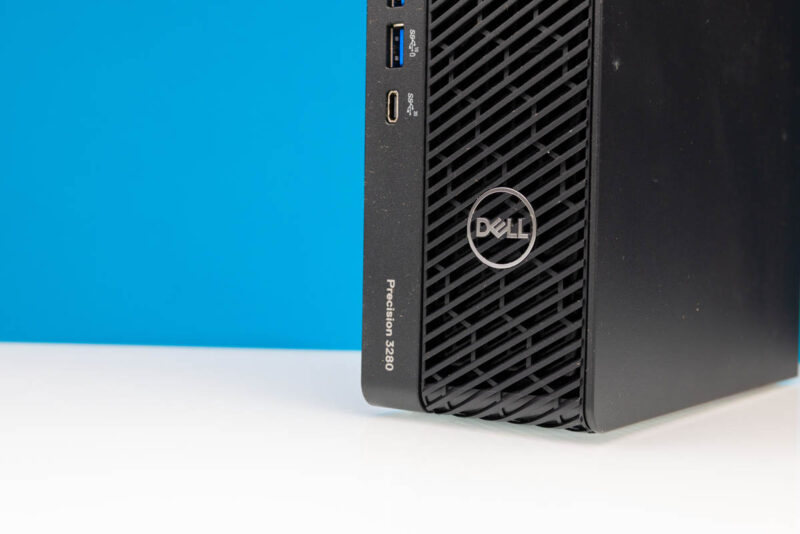
On the rear, we have quite a bit going on.
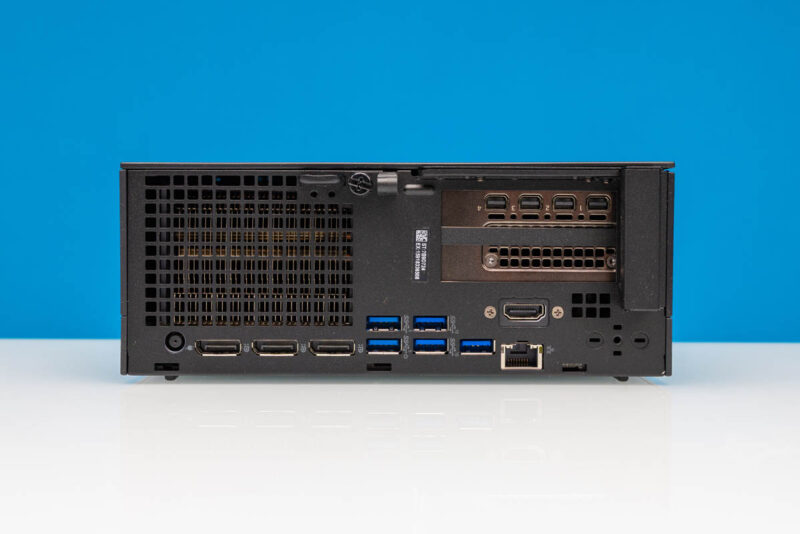
First, there is a massive vent for cooling the Intel Core CPU.
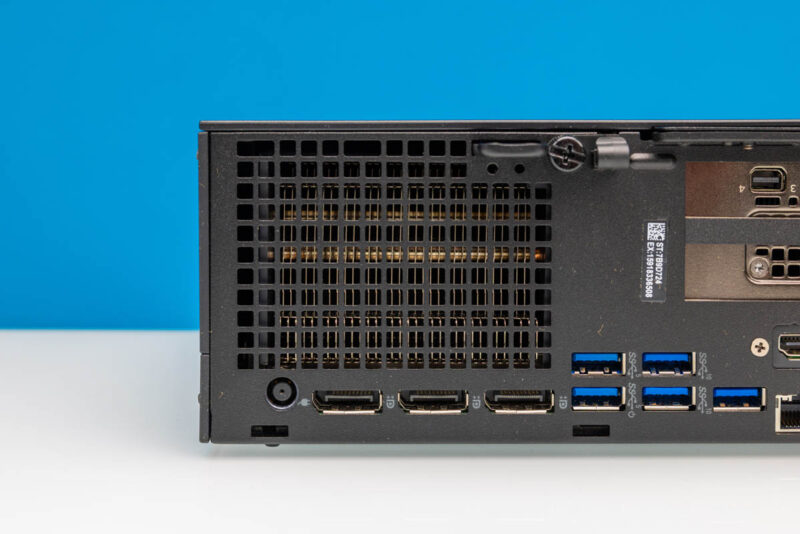
Underneath that we have a power input along with three DisplayPort 1.4a ports. Those are just three of the eight display outputs on this system (as configured.)
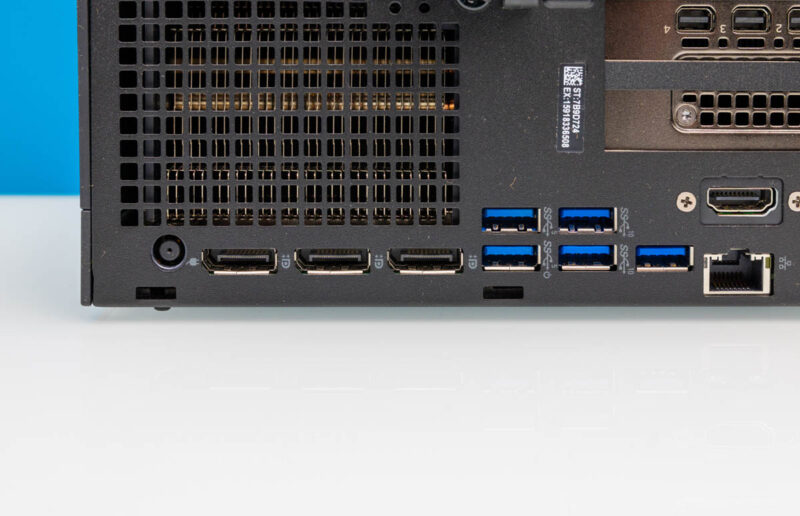
Next to that we have five USB Type-A ports. Two are USB 3.2 Gen1 and three are USB 3.2 Gen2. Dell does a great job labeling ports in general, but the fifth port lacks a label for some reason. It is just strange to see Dell system missing something like this.
Next to the USB ports we get a 1GbE Intel i219-lm port. We, of course, would prefer a 2.5GbE port standard, but this likely done to support Intel vPro management.
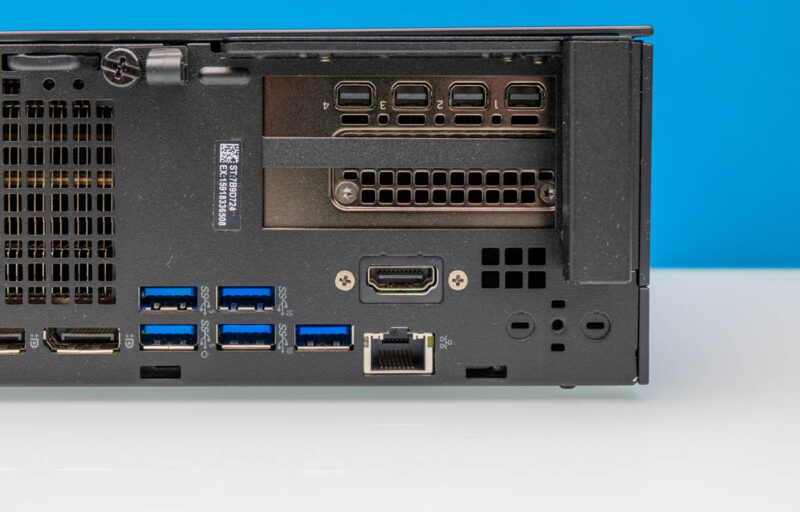
We also have an optional HDMI port installed for our fourth display output. Next to this area are two punchouts for external WiFi antenna solutions if you wanted to do that.
The big feature, however, is the dual low profile slots. In this case, those are filled with a NVIDIA RTX 4000 Ada 20GB GDDR6 DPU. That gives us another four display outputs for eight total on the system. If you want to simply have a lot of displays connected, this is a neat little setup.
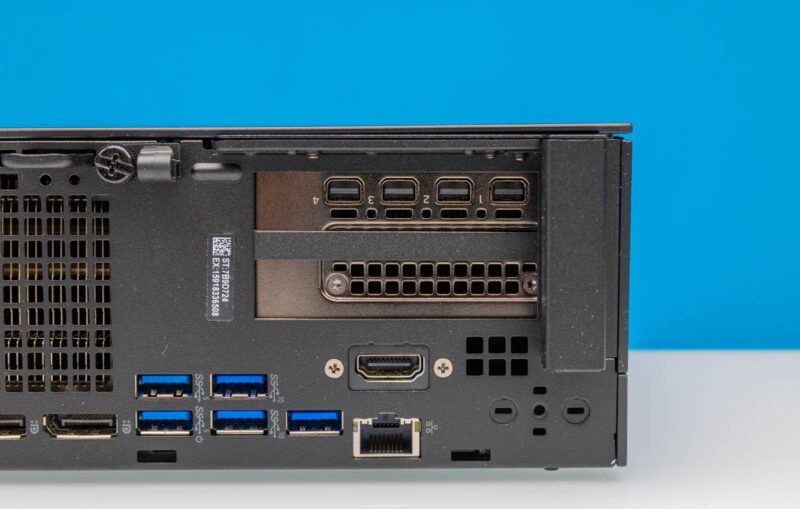
Those two slots also mean that if you do not have a big GPU, you can use the top one as a PCIe slot later for a NIC or another use while using the bottom for connectivity. For example, if you install a M.2 NIC later, you can use the second slot to provide the rear port access while using the top slot for a PCIe card.
A quick one here is that we get rubber feet on two sides to support vertical or horizonal orientation.
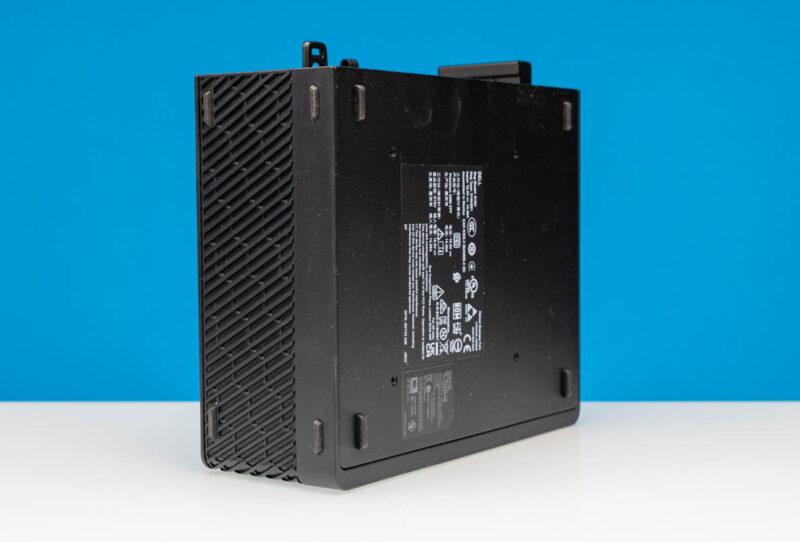
Getting inside the system is super easy. There is a single thumbscrew that lets you pop off the cover and get inside. We wish all mini PCs were this easy to get inside.
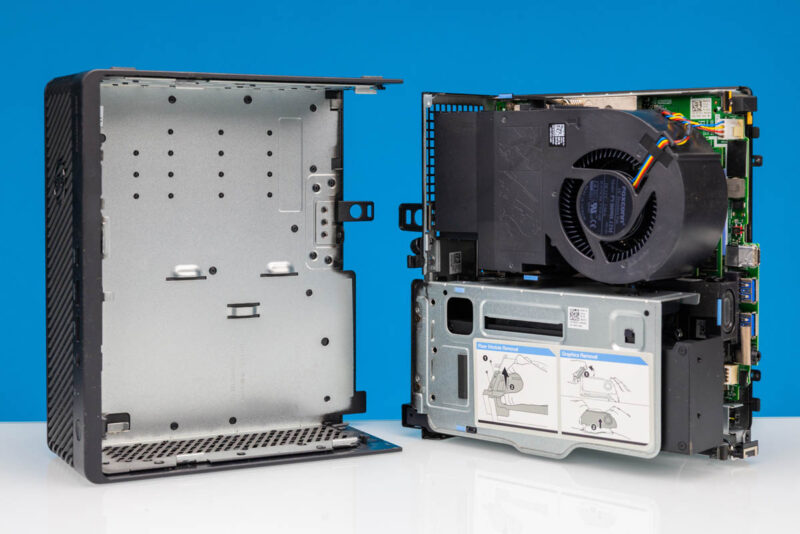
Next, let us get inside the system to see what makes it work.


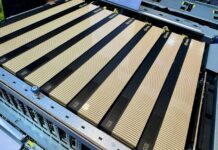


>Next to the USB ports we get a 1GbE Intel i219-lm port. We, of course, would prefer a 2.5GbE port standard, but this likely done to support Intel vPro management.
Both i225-LM and i226-LM provide 2.5G and vPro/AMT support.
They still have problems despite new hardware revisions, so that might be the actual reason why Dell chose to go with older 1G model.
Would have been nice to see a photo of the PCI riser without the NVIDIA card installed. I have zero interest in graphics or GPU computing but there are a number of other things I might like to install in this system, and a picture being worth a thousand words, it would make it much easier to see what’s going on there.
As I understand it, it’s only a single slot riser with space for a double wide card, is that right? Is there a two slot riser option?
@Matt
Dell has excellent documentation and you can see the riser photos there. I can’t paste a direct link but you can find it on their site: Precision 3280 CFF Owner’s Manual -> Removing and installing Customer Replaceable Units (CRUs) -> Intel E810 Ethernet network adapter -> Installing the Intel E810 Ethernet network adapter into the riser-card module.
It looks to be a dual x8 open-ended slot riser, but it has a proprietary slot on the motherboard.
I really missed seeing USB4 support, as well as a second, potentially 5 or 10Gbps NIC. These things really shouldn’t cost that much in 2025 and we’re talking about a workstation here. Random Chinese manufacturers can manage it, Framework can manage it on their desktop, so how come Dell is still stuck in the past? I do appreciate the PCIe expansion, but it’s worthless if I have to use it up for networking or extra connectivity.
Believe it or not, most enterprise networks use 1GbE ports for their clients (still). A use case for something above 1Gbps is completely valid, but Dell is too closely aligned with what corporate purchasing is requiring, and they don’t require it. Servers are a different matter.
For most network admins, they consider 1Gbps for a client as more than adequate.
So until Corporate USA starts buying faster ports from Cisco or whomever, this is what they make.
I’d argue the labeling on the USB ports is fine. the label sits between the two ports, so since they’re the same, it just covers both left and right of the label. Yea its different, but it makes sense to me.
I’m very unhappy to see that DELL gave up the Precision Rackstation 3930 1U with no replacement. The sales representative tried to fool me with 10 000 € rack models but the reason to own a 3930R was the capabilities with single core apps using an intel i9900k.
The more expensive models have much more RAM but perform poorly in single core use.